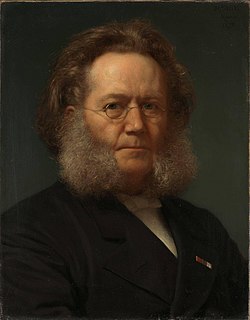
Henrik Johan Ibsen was a Norwegian playwright and theatre director. As one of the founders of modernism in theatre, Ibsen is often referred to as "the father of realism" and one of the most influential playwrights of his time. His major works include Brand, Peer Gynt, An Enemy of the People, Emperor and Galilean, A Doll's House, Hedda Gabler, Ghosts, The Wild Duck, When We Dead Awaken, Rosmersholm, and The Master Builder. Ibsen is the most frequently performed dramatist in the world after Shakespeare, and A Doll's House was the world's most performed play in 2006.

Knut Hamsun was a Norwegian writer who was awarded the Nobel Prize in Literature in 1920. Hamsun's work spans more than 70 years and shows variation with regard to consciousness, subject, perspective and environment. He published more than 20 novels, a collection of poetry, some short stories and plays, a travelogue, works of non-fiction and some essays.

Sir Edmund William Gosse was an English poet, author and critic. He was strictly brought up in a small Protestant sect, the Plymouth Brethren, but broke away sharply from that faith. His account of his childhood in the book Father and Son has been described as the first psychological biography.

Grimstad is a municipality in Agder county, Norway. It belongs to the geographical region of Sørlandet. The administrative center of the municipality is the town of Grimstad. Some of the villages in Grimstad include Eide, Espenes, Fevik, Fjære, Håbbestad, Hesnes, Homborsund, Jortveit, Kroken, Landvik, Nygrenda, Prestegårdskogen, Reddal, Roresand, Rønnes, Skiftenes, Tjore, Vik, and Østerhus.
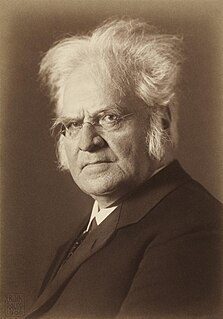
Bjørnstjerne Martinius Bjørnson was a Norwegian writer who received the 1903 Nobel Prize in Literature "as a tribute to his noble, magnificent and versatile poetry, which has always been distinguished by both the freshness of its inspiration and the rare purity of its spirit". The first Norwegian Nobel laureate, he was a prolific polemicist and extremely influential in Norwegian public life and Scandinavian cultural debate. Bjørnson is considered to be one of the four great Norwegian writers, alongside Ibsen, Lie, and Kielland. He is also celebrated for his lyrics to the Norwegian national anthem, "Ja, vi elsker dette landet". The composer Fredrikke Waaler based a composition for voice and piano (Spinnersken) on a text by Bjørnson, as did Anna Teichmüller.

Mahmoud Darwish was a Palestinian poet and author who was regarded as the Palestinian national poet. He won numerous awards for his works. Darwish used Palestine as a metaphor for the loss of Eden, birth and resurrection, and the anguish of dispossession and exile. He has been described as incarnating and reflecting "the tradition of the political poet in Islam, the man of action whose action is poetry." He also served as an editor for several literary magazines in Palestine.
Catiline or Catilina was Henrik Ibsen's first play. It was written during winter 1848–49 and first performed under Ibsen's name on 3 December 1881 at the Nya Teatern, Stockholm, Sweden. The first performance of Catilina in Norway not under Ibsen's pseudonym was at Det Nye Teater in Oslo on 24 August 1935.
John Richard Northam was a professor emeritus of literature and drama, ranked among the foremost Ibsen scholars in the world.
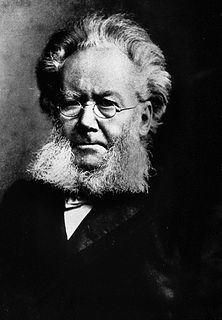
The Ibsen Museum (Ibsenmuseet) occupies the last home of the playwright Henrik Ibsen. It is located close to the Royal Palace on Henrik Ibsens gate in Oslo, Norway. The museum in Oslo is closed. According to the website, it will reopen in 2021.
Events in the year 1862 in Norway.
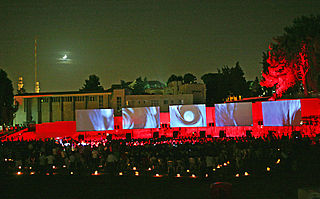
id - Identity of the Soul is a work of performance art produced by Martine Rød and directed by Thomas Hoegh. The first version of this work, Terje, was performed in Yokohama, Japan in 2006 with Paal Ritter Schjerven as Co-Director and Director of Cinematography. and the latest version premiered in Palestine in 2008. In 2009 the show then toured to Doha, Qatar in May and to the Teater Ibsen in Skien, Norway in June. The Studio version of id had its English premiere at the Cambridge Film Festival on 17 September 2009 and is currently touring the UK.
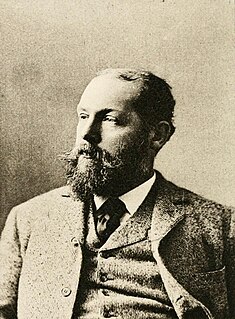
Hjalmar Hjorth Boyesen was a Norwegian-American author and college professor. He is best remembered for his novel Gunnar: A Tale of Norse Life, which is generally considered to have been the first novel by a Norwegian immigrant in America.

A Man There Was is a 1917 Swedish drama directed by Victor Sjöström, based on a poem of the same title by Henrik Ibsen. With a budget of SEK 60,000, it was the most expensive Swedish film made up to that point, marking a new direction in Swedish cinema with more funding to fewer films, resulting in more total quality.
Thomas Hoegh is a Norwegian artist, investor and entrepreneur who oversees a portfolio of high-growth businesses in the creative sectors. Thomas directs films and theatre under the name Torstein Blixfjord. He was born in Oslo in 1966.
Haldor Johan Hanson was an American hymn writer, publisher and author.
Kjell-Ole Haune is a composer and producer. He is best known for composing and producing Terje Vigen-The Musical, which is based on a poem by Henrik Ibsen, and the musical TONIGHT, for which he wrote the story, lyrics and music. He is the first Norwegian composer to have two of his own musicals produced in London's West End. He has also produced the book Terje Vigen, which is the first publication of this poem by Henrik Ibsen in English and German, . The English translation is by John Northam with German translation by Odd Jensen.
Torstein Blixfjord is a Norwegian artist who works with film, performance, poetry and photography. He began directing theatre in 1990 with a series of adaptations of plays by Strindberg and Ibsen, to whose work Blixfjord has often returned. Following these productions, he went on to work with multimedia, and later to direct film in 2000. He is best known as a film director and producer.
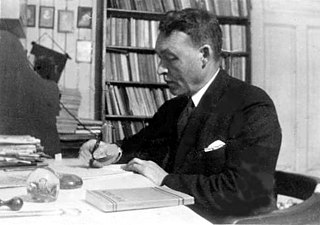
Johan Austbø was a Norwegian teacher, dancer, poet, composer, singer, and proponent of Nynorsk.
Terje is a masculine given name of Scandinavian origin, a varian of Torgeir. In Estonia, it is a feminine given name. Notable people with the name include:

Fjære Church is a parish church of the Church of Norway in Grimstad Municipality in Agder county, Norway. It is located in the village of Fjære. It is the main church for the Fjære parish which is part of the Vest-Nedenes prosti (deanery) in the Diocese of Agder og Telemark. The white, stone church was built in a long church design around the year 1150 using plans drawn up by an unknown architect. The church seats about 300 people.












